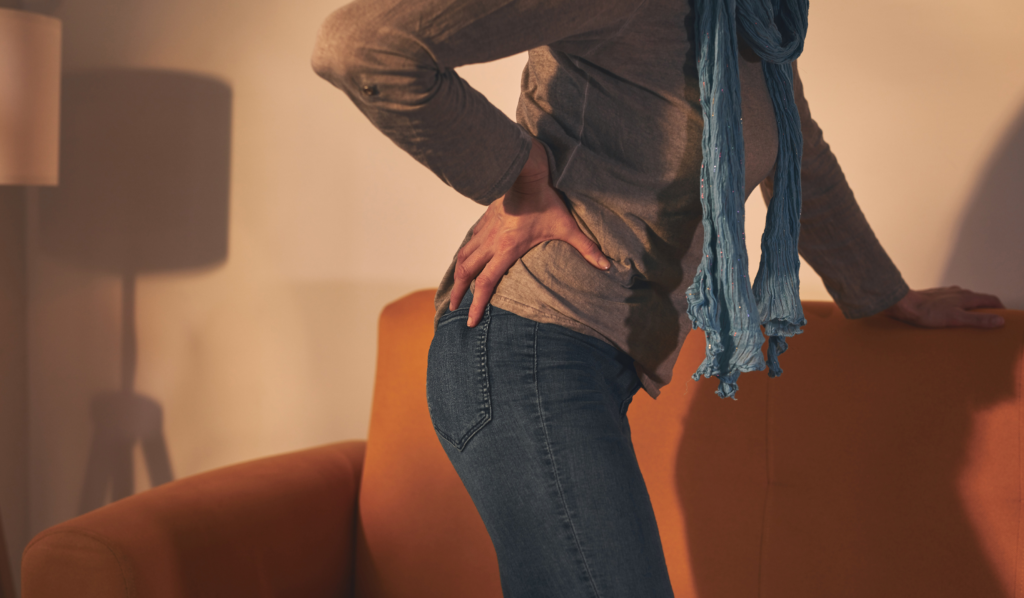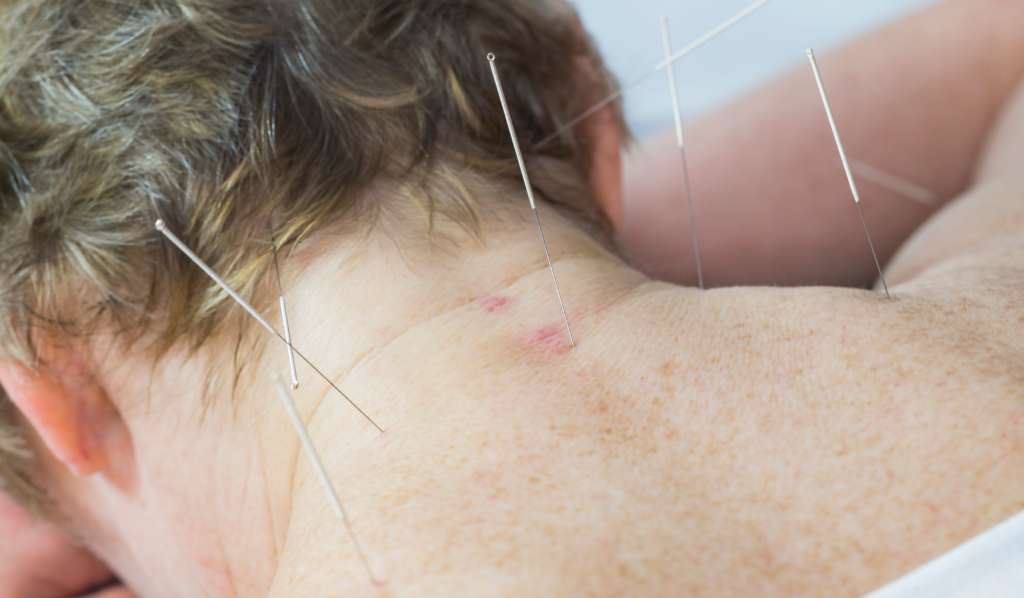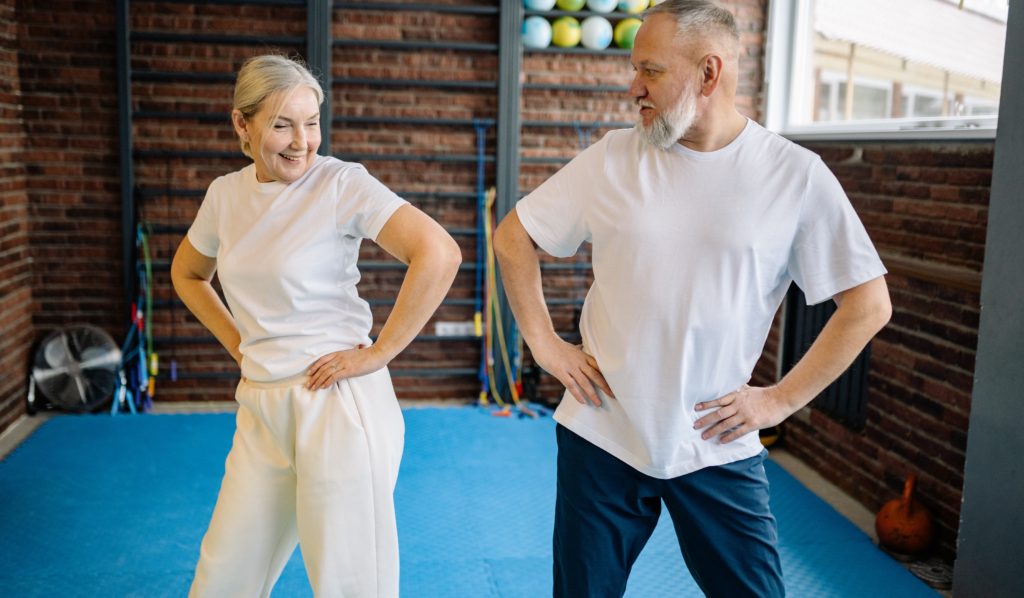Hip fractures are a life-altering experience for elderly individuals. Beyond the physical pain, the journey to recovery is often fraught with emotional and mental challenges. Traditional treatment options like surgery, physical therapy, and medications are vital, but they can leave gaps—particularly when it comes to managing pain, promoting healing, and addressing the overall well-being of the patient.
As a time-honored practice rooted in Traditional Chinese Medicine (TCM), acupuncture is gaining recognition as a complementary approach that goes beyond surface-level recovery. It can help elderly individuals recovering from hip fractures by alleviating pain, improving circulation for healing, and fostering emotional and physical well-being as part of a holistic care plan.
Explore how acupuncture offers a fresh perspective.
Common Challenges of Hip Fracture Recovery in Elderly Patients
Beyond Pain: Secondary Health Concerns
Hip fractures don’t just affect the bones—they disrupt lives. Many elderly patients face secondary complications such as chronic inflammation, muscle atrophy, and even post-hospitalization syndrome. The trauma of a fracture can also lead to depression, fear of falling again, and a loss of independence. These struggles highlight the need for a recovery approach that considers the whole person, not just the injury.
The Role of Aging in Healing
For older adults, the body’s natural healing processes slow down. Reduced blood circulation, impaired cellular regeneration, and weaker immune responses make recovery more challenging. TCM views aging as an imbalance in vital energy or qi, which can impact bone health and overall resilience. Addressing these systemic challenges can pave the way for a more complete recovery.
Acupuncture and Bone Health
Does Acupuncture Stimulate Bone Healing?
Emerging evidence suggests acupuncture may directly support bone healing. By stimulating certain points, acupuncture can enhance osteoblast activity—the cells responsible for bone formation. It can also improve calcium metabolism, which is critical for rebuilding bone strength. For elderly patients, these subtle but powerful effects can make a difference in long-term recovery.
Addressing Systemic Issues That Impact Recovery
In TCM, bone health is closely linked to the kidneys and liver. Acupuncture helps balance these systems, creating a foundation for stronger, healthier bones. By addressing not only the fracture but the underlying imbalances, acupuncture promotes a more holistic recovery.
Uncommon Benefits of Acupuncture for Hip Fracture Recovery
Combating Post-Surgery Side Effects
After surgery or prolonged immobilization, many patients experience nausea from anesthesia, digestive discomfort from pain medications, and general fatigue. Acupuncture can help alleviate these side effects, allowing patients to focus more fully on healing.
Preventing Long-Term Mobility Issues
Acupuncture doesn’t just address pain; it improves flexibility and range of motion, particularly in the hip joint. It may even reduce the risk of scar tissue formation, ensuring that recovery progresses smoothly.
Improving Sleep and Energy
Recovery isn’t just about the body—it’s about the mind. Insomnia and fatigue can slow healing, but acupuncture supports restorative sleep and boosts energy levels, helping patients stay optimistic and engaged during their rehabilitation.
The Synergy Between Acupuncture and Modern Rehabilitation Techniques
Bridging Gaps in Physical Therapy
Physical therapy is essential after a hip fracture, but acupuncture can complement it by preparing muscles for movement and reducing stiffness. This synergy can lead to more effective and less painful therapy sessions.
Integrating Electroacupuncture
Electroacupuncture, which combines traditional techniques with gentle electrical stimulation, can enhance nerve function and muscle activation. This is particularly valuable for elderly patients recovering from surgery or prolonged immobility.
Acupuncture for Secondary Prevention of Hip Fractures
Preventing Future Falls
Fear of falling is common after a fracture. Acupuncture can help improve balance by supporting the vestibular system and strengthening leg muscles. These subtle improvements build confidence, reducing the likelihood of future falls.
Boosting Bone Strength in Osteoporotic Patients
For those with osteoporosis, acupuncture can be a proactive step. By stimulating points that nourish kidney jing (essence) and promote bone strength, it works to prevent fractures before they occur.
Acupuncture Protocols for Elderly Patients with Hip Fractures
Customizing Point Selection Based on Recovery Stage
Acupuncture treatments evolve as the patient progresses through recovery. During the acute stage, points like GB34 and BL40 focus on reducing pain and inflammation. In the later stages, points such as ST36 and SP6 promote circulation and muscle strength.
Tailoring Techniques for Fragile Patients
For elderly individuals, gentle techniques like moxibustion (heat therapy) or scalp acupuncture can deliver results without causing discomfort. This ensures a safe and effective experience for even the most sensitive patients.
Acupuncture as a Gateway to Holistic Healing Post-Hip Fracture
Emotional Recovery through Acupuncture
Recovering from a hip fracture can be emotionally draining. Acupuncture helps alleviate anxiety, depression, and the feelings of helplessness that often accompany prolonged recovery. It nurtures the spirit as well as the body, restoring a sense of balance.
Managing Coexisting Conditions
Many elderly patients live with chronic conditions like arthritis or diabetes, which can complicate fracture recovery. Acupuncture addresses these coexisting issues, offering relief and improving overall quality of life.
Why Acupuncture is a Practical Choice for Elderly Patients
Accessibility and Comfort
Acupuncture is a gentle, low-impact therapy that accommodates the physical limitations of elderly patients. It offers a sense of comfort and hope during what can be a daunting recovery process.
Cost-Effectiveness in the Long Run
While acupuncture requires an initial investment, its ability to reduce dependence on medications and speed recovery can lower overall healthcare costs. It’s not just a treatment—it’s an investment in well-being.
Risks and Considerations of Acupuncture for Elderly Patients with Hip Fractures
While acupuncture offers many potential benefits for elderly individuals recovering from hip fractures, it’s important to understand the associated risks and ensure treatments are administered with proper care. Here are key considerations:
Potential Risks of Acupuncture
Bruising or Soreness: Elderly patients may experience mild bruising or soreness at the needle insertion sites due to thinner skin or fragile capillaries.
Infection Risk: Although rare, improper sterilization of needles can lead to infections. This is why it is essential to work with licensed practitioners who follow strict hygiene protocols.
Dizziness or Lightheadedness: Some elderly individuals may feel lightheaded during or after a session, particularly if they are dehydrated or have low blood pressure.
Contraindications for Specific Conditions
Patients with bleeding disorders or those taking blood thinners should inform their acupuncturist, as adjustments may be needed to minimize bleeding or bruising risks.
Elderly individuals with severe osteoporosis should avoid certain acupuncture points or techniques that may inadvertently place pressure on weakened bones.
Practitioner Expertise is Key
Acupuncture for elderly patients requires specialized knowledge to tailor treatments safely and effectively. Fragile patients may benefit more from gentler techniques like moxibustion or auricular acupuncture to minimize physical strain.
Importance of Communication with Healthcare Providers
Acupuncture should be part of a broader care plan, not a standalone treatment. Patients should always inform their primary care doctors or surgeons before beginning acupuncture to ensure it complements other treatments and medications safely.
Monitoring Individual Responses
Each patient responds differently to acupuncture, and elderly individuals may require closer monitoring to adjust treatment plans based on their unique needs and recovery progress.
Other Holistic Methods for Hip Fractures in Elderly Patients
While acupuncture provides significant benefits, a comprehensive recovery plan for elderly patients with hip fractures should incorporate other holistic approaches to address the physical, emotional, and systemic challenges they face. These complementary therapies can work alongside acupuncture to promote a well-rounded and effective recovery.
Physical Therapy and Gentle Movement Practices
Physical Therapy: Essential for restoring mobility and strengthening muscles. Tailored exercises help reduce stiffness and improve joint function while preventing muscle atrophy.
Yoga and Tai Chi: These gentle movement practices enhance balance, flexibility, and coordination, reducing the risk of future falls and promoting a sense of mindfulness.
Pilates for Seniors: Low-impact exercises that target core strength and stability to support the hips and lower back during recovery.
Nutrition and Dietary Support
Bone-Healing Nutrients: A diet rich in calcium, magnesium, vitamin D, and protein can support bone repair. Foods like leafy greens, nuts, seeds, and fortified dairy products are essential.
Herbal Supplements: Traditional Chinese Medicine herbs, such as Dang Gui (Angelica Sinensis) and Du Zhong (Eucommia Bark), can complement acupuncture by nourishing the bones and supporting overall health.
Anti-Inflammatory Diet: Incorporating foods like turmeric, ginger, fatty fish, and berries can help reduce inflammation and promote faster healing.
Emotional and Psychological Support
Counseling or Therapy: Fracture recovery often brings feelings of helplessness or depression. Working with a therapist can provide emotional tools to cope with these challenges.
Meditation and Mindfulness: These practices can help reduce stress, enhance emotional well-being, and improve focus during recovery.
Community Support Groups: Connecting with others going through similar challenges fosters a sense of belonging and emotional resilience.
Massage and Manual Therapies
Therapeutic Massage: Reduces muscle tension, improves circulation, and alleviates pain around the fracture site.
Myofascial Release Therapy: A hands-on technique to relieve tightness in the connective tissues, promoting flexibility and reducing discomfort.
Chiropractic Adjustments (with Caution): Gentle realignment of the musculoskeletal system to improve mobility and address compensatory patterns caused by the injury.
Energy-Based Therapies
Reiki: A non-invasive therapy that focuses on balancing the body’s energy to reduce stress and promote relaxation.
Qigong: An ancient Chinese practice combining slow movements, breathing exercises, and meditation to enhance vitality and aid in recovery.
Hydrotherapy
Warm Water Therapy: Exercising in warm water reduces the impact on joints and allows for gentle rehabilitation while soothing pain.
Cold Water Immersion: Helps reduce inflammation and swelling in the initial stages of recovery.
Assistive Technologies and Ergonomic Adjustments
Mobility Aids: Devices such as walkers, canes, and crutches can help reduce strain on the affected hip while improving confidence in movement.
Home Modifications: Adjustments like installing grab bars, non-slip mats, and elevated seating can help prevent future injuries and make daily activities safer.
Supporting Holistic Recovery
Recovering from a hip fracture requires more than addressing physical pain—it demands a holistic approach that considers the emotional, mental, and systemic challenges unique to elderly patients. Acupuncture offers a pathway to healing that is gentle, effective, and deeply attuned to the body’s natural rhythms.
At ACA Acupuncture and Wellness, our experienced practitioners are here to support you or your loved one through this journey. Whether you’re seeking pain relief, improved mobility, or emotional balance, acupuncture can play a pivotal role in restoring vitality and confidence. Reach out to us today to explore how we can help make recovery a compassionate and empowering experience.
Sources:
Cheng, M.-H., Shih, Y.-H., Lin, C.-L., Yen, H.-R., & Wu, M.-Y. (2024). Integrating traditional Chinese medicine reduced the risk of hip fracture in patients with dementia. Clinical Nutrition.
Park, H. S., Jeong, H. I., Sung, S.-H., & Kim, K. H. (n.d.). Acupuncture treatment for hip pain: A systematic review and meta-analysis. Journal of Acupuncture and Meridian Studies. Manoj Sharma & Kavita Batra (Eds.).








Recent Comments